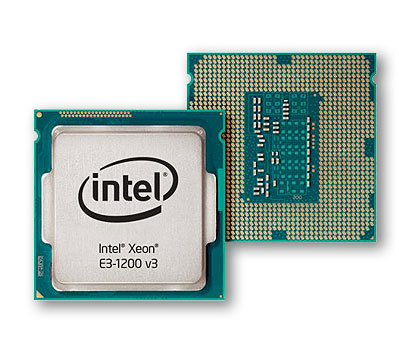Building a High Performance Rackmount Workstation
In order to compete, one must compute. It is important to find a competitive advantage as that will lead dominance for the company. The capability to do things more efficiently and effectively is a major advantage point. Using Intel Workstations product can help customers be more effective than their competition.
How to choose the processor that best fits the needs? The Intel Xeon Processor E3 1200 v3base entry level workstation built for professional or an Intel Core Base desktop? They are all stable Intel technologies but only one supports error correcting code memory technology and are certified to run professional applications. The Intel Xeon Processor E3 family enhances reliability, has enhanced graphics performance, and is optimized, tested, and certified for professional applications. The Intel Core i3/i5/i7 processor is standard for user productivity tools, has built-in PC protection and support, and is a typical corporate mobile or desktop PC. For example, auto desk recommends running in 64 bit mode with an Intel Xeon Processor as starting point. With built-in Intel HD Graphics P4600, the E3 1200 v3 processor family delivers the visual performance and quality demanded by professional grad CAD in media entertainment applications. Also, support for Intel vPro technology makes it secure and manageable as any PC in the organization. There are endless possibilities to what the Intel Xeon Processor can do with.

Error Correcting Code, or ECC, is essential. Faster memory speeds and larger capacities increase the likelihood of system memory errors. A memory bit fail can cause a hard error such as crashing the system or a soft error like corrupting the data and it’ll go completely undetected. One in three systems experience one or more correctable memory errors a year. ECC memory detects 99.9998% of errors and is only supported on servers and workstation platforms, not desktop platforms. When memory bits flip to the wrong condition, this flip can entirely modify a piece of data. ECC memory is able to detect and correct single and multiple bit errors and help the system protect against data corruption. After experiencing a correctable memory error, systems are 228 times more likely to see another one. What is the real cause of a memory error? Imagine due to corrupt data, a part you design is one fourth of one inch short. Would that be an expensive problem? Probably more costly than all the workstations you buy over a three year period.
The processor, memory, storage, and graphics define a workstation. Some people believe that graphics define a workstation, maybe if you were using Adobe Creative Suites. Most CAD users engaged in graphics find that an entry level graphics card will be more than adequate for their daily work. And if they’re engaged in photo realistic imaging using ray tracing technology, then having a workstation with more computing cores is actually more beneficial than an advance graphics card. The Intel Xeon Processor E3 1200 v3 product family with Intel HD graphics delivers entry graphics card performance. Intel is certified in optimizing most DX and open GL base applications used on workstations.
Intel Xeon Processor E3 family includes 3 graphics enabled sku targeted at entry workstation usage. Intel HD graphics include a graphic extension with 20 execution units and support for dynamic turbo. Other features include expanded graphic certification, media acceleration, and video processing capabilities. Intel HD graphics P4600 are optimized for workstations usages where Intel Graphics HD P4700 SKU are optimized for media trans-coding.
If you have an entry rackmount workstation customer that is performing CAD design work, internal Intel measurements has shown that Intel HD Graphics P4600 found on select Intel Xeon Processor E3 families SKU delivers incomparable performance to entry level graphics card. By saving money on a discreet graphics card, customers can invest more in other components like SSD that will benefit overall systems performance.
What can SSD do for rackmount workstation users? For a typical day in the life of an engineer, SSD impacts the opens, closes, modeling, rebuilding, switch sheets and saves. Comparing a standard 7200 RPM drive to SSD, there is as much as 55% increase in user productivity. SSD may cost more initially than standard drive but they can impact a typical engineer productivity by up to 55% so the investment is probably worth it.
Balance makes speed possible, just like a car cannot go fast with unbalanced wheels. Consider balancing spending on storage, graphics, memory, and CPU for best overall performance. The Intel Xeon Processor E3 family is a smart choice for a balanced entry workstation platform. Workstation users are engaged in design, spreadsheets, emails, web surfing, and much more on a daily basis. By investing in a balanced rackmount workstation, customers will have a better overall experience. It may cost slightly more than an entry rack mount workstation, but it will help end customer optimize their throughput and get more done in a day.




